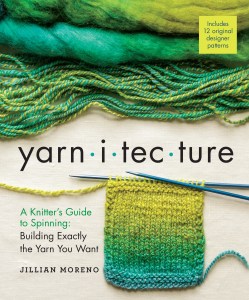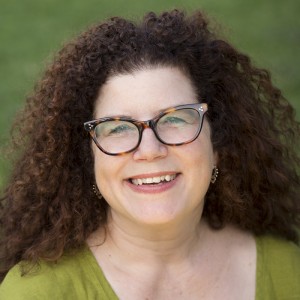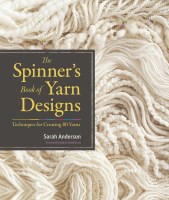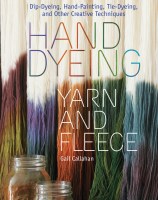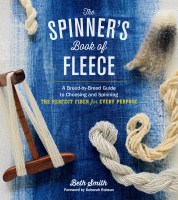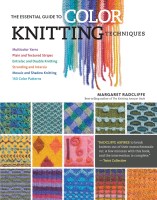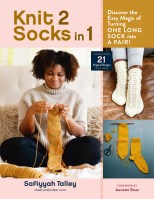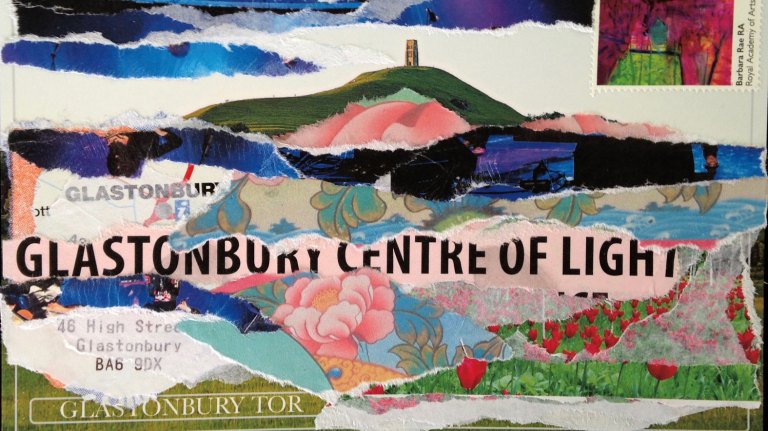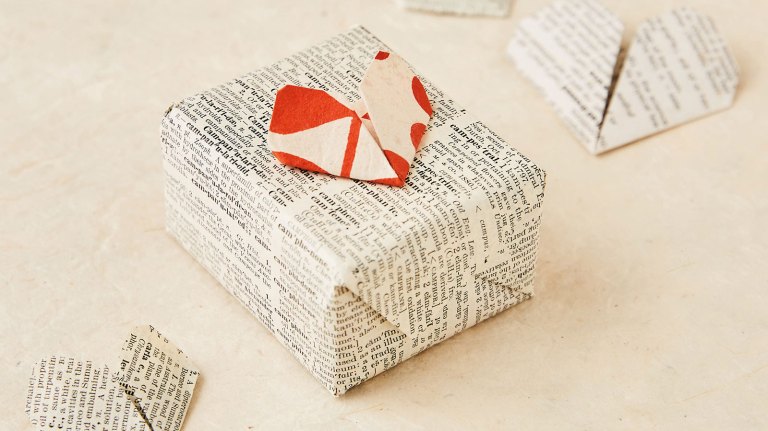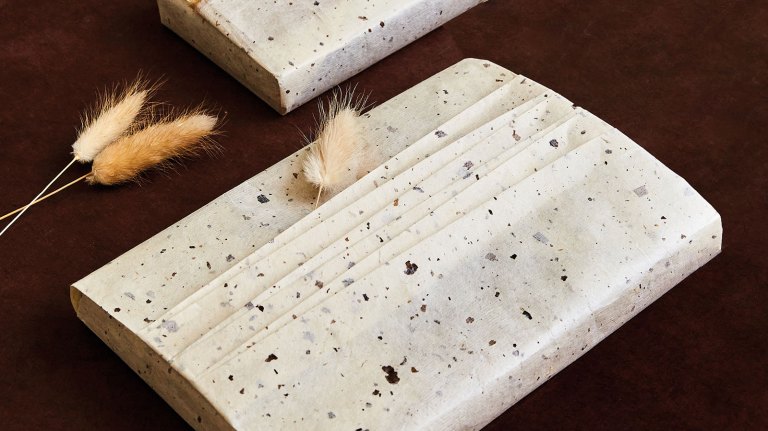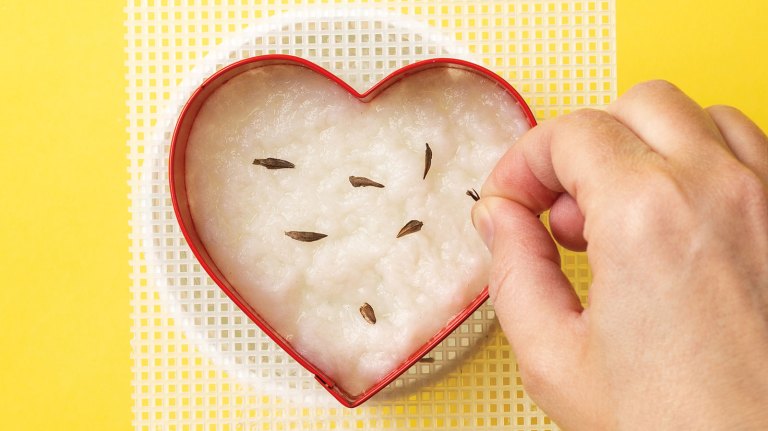Mix It Up: Different Fibers, Plied or Blended
In the world of spinning, how you combine different fibers — even fibers of the same colorway — makes a big difference in the look of your finished yarn and knitted projects.
Have you noticed how many more spinners there are nowadays? The spinning world is growing, and the spinning world is changing. Many spinners are coming from the knitting world. Some come to spinning because they want to create their own yarn, exactly how they want it, choosing every aspect from color to feel to gauge. Some come because they have fallen in love with the braids and batts dyed by one of the hundreds of talented dyers around the world.
Dyed fiber blends in spinning create really exciting yarns. I think they are especially pretty when the different fibers take dye differently. Sometimes I like to spin fibers already blended and sometime I like to mix fibers by plying. Sometimes I use both types of yarn in the same project!
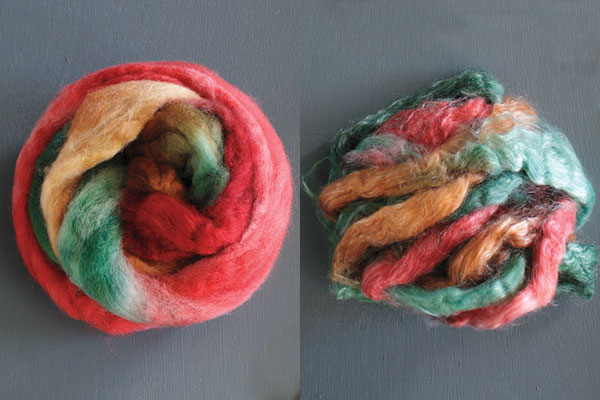
Take Merino and Tencel, for example. Both bumps of fiber in the above photo are dyed the same colorway; the fiber on the left is Merino and the fiber on the right is Tencel. The Merino is a matte fiber and colors look clear and deep when it’s dyed. The Tencel is crazy shiny and the color is a lot softer, almost pastel.
When these two fibers are spun separately and plied together it creates a really interesting yarn. Plying is combining two or more singles in the opposite direction that they were spun in. The singles are twisted (not drafted) while they are held under identical tension, so that the twist enters both (or all) the singles at the same time.
The yarn and swatch shown below are both one ply of Merino and one ply of Tencel. The Tencel looks like flecks against the Merino, creating a lively-looking yarn. The difference in color between the Merino and Tencel make a marled or candy cane-striped yarn, which looks especially fresh when knitted.
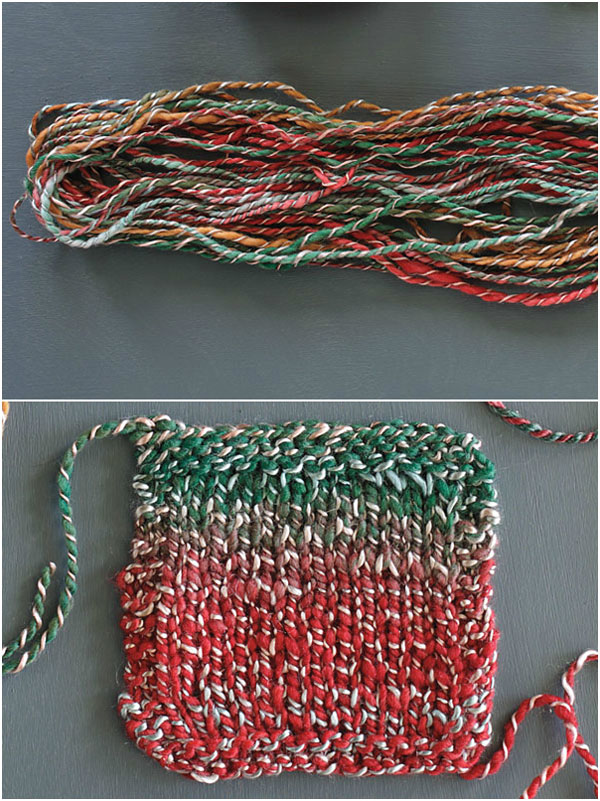
When Merino and Tencel are blended before they are spun, as in the yarn and the knitted swatch below, the finished look is quite different, but still lovely. When blended, the Tencel brings down the brightness of the color.
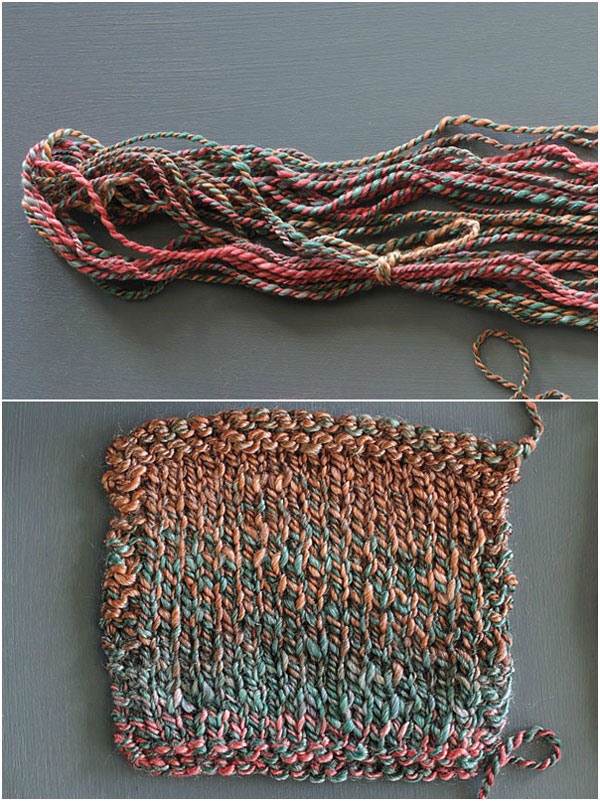
Compare this Merino/Tencel blend with the all-Merino roving at the beginning of this article. Though they are the same colorway, the Merino/Tencel blend is muted compared to the 100% Merino roving. The Tencel in the blend also adds an overall shimmer to the yarn and swatch, rather than flecks of shine. To me, it is always exciting to see how color looks on different fibers!
Spinning yarn never gets boring and every change makes a difference to your finished yarn.
